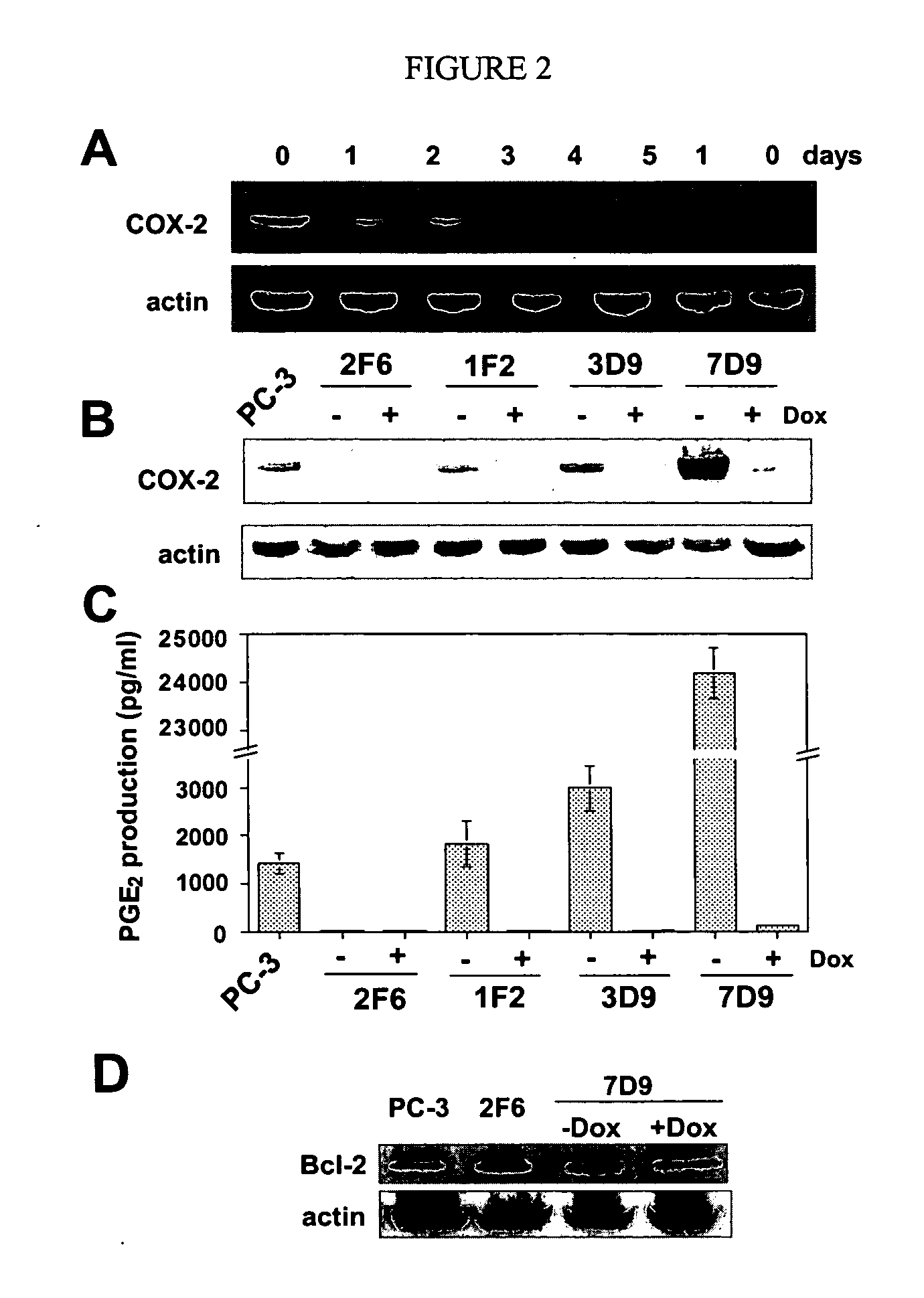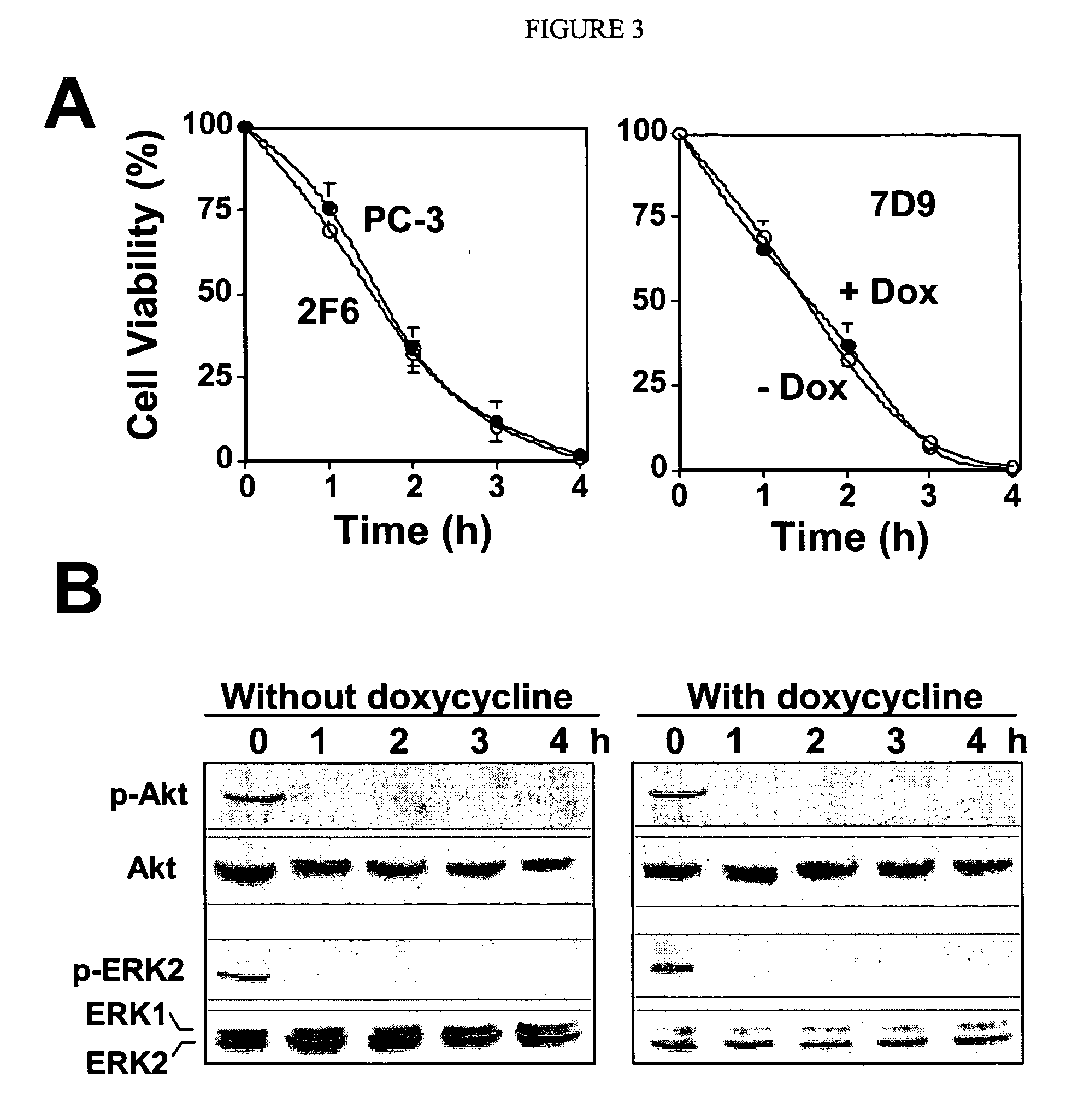Compounds and methods for inducing apoptosis in proliferating cells
a proliferating cell and compound technology, applied in the field of agents and methods for treating cancer, can solve the problems of limited survival impact and always fatal outcome of hrpc, and achieve the effects of preventing, treating, and delaying the onset of cancer
- Summary
- Abstract
- Description
- Claims
- Application Information
AI Technical Summary
Benefits of technology
Problems solved by technology
Method used
Image
Examples
examples 1-13
[0192] Samples 1-13 were tested for their ability to induce apoptosis using the following procedure. Results are listed in Table 1 along with IC50 values for the compounds.
[0193] Analysis for apoptosis Apoptosis ELISA. Induction of apoptosis was also assessed by using a “Cell Death Detection ELISA” assay (Boehringer-Mannheim) following the manufacturer's instructions. This test is based on the quantitative determination of cytoplasmic histone-associated DNA fragments in the form of mono- and oligonucleosomes after induced apoptotic death. In brief, PC-3 cells (2.5×106) were plated on a T-75 flask 24 h before experiment. Cells were washed by 5 mL of serum-free RPMI 1640 medium twice, and were then treated with the test agent at different concentrations or DMSO vehicles for different time intervals. Both floating and adherent cells were collected, and cell lysates equivalent to 104 cells were used for the ELISA analysis.
[0194] All compounds described herein were evaluated for their ...
examples 14-71
[0195] Compounds of the present invention were tested on the following cell lines by the National Cancer Institute Developmental Therapeutics Program.
examples 4-19
[0196] Leukemia
[0197] CCRF-CEM
[0198] HL-60
[0199] K-562
[0200] MOLT-4
[0201] RPMI-8826
[0202] SR
PUM
| Property | Measurement | Unit |
|---|---|---|
| Molar density | aaaaa | aaaaa |
| Molar density | aaaaa | aaaaa |
| Molar density | aaaaa | aaaaa |
Abstract
Description
Claims
Application Information
 Login to View More
Login to View More - R&D
- Intellectual Property
- Life Sciences
- Materials
- Tech Scout
- Unparalleled Data Quality
- Higher Quality Content
- 60% Fewer Hallucinations
Browse by: Latest US Patents, China's latest patents, Technical Efficacy Thesaurus, Application Domain, Technology Topic, Popular Technical Reports.
© 2025 PatSnap. All rights reserved.Legal|Privacy policy|Modern Slavery Act Transparency Statement|Sitemap|About US| Contact US: help@patsnap.com



